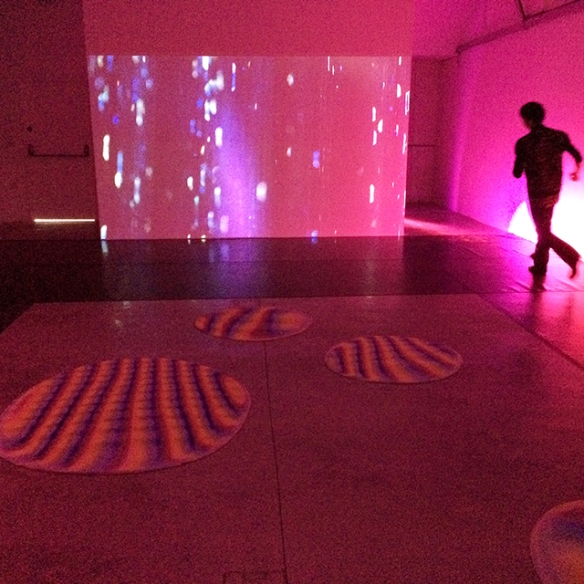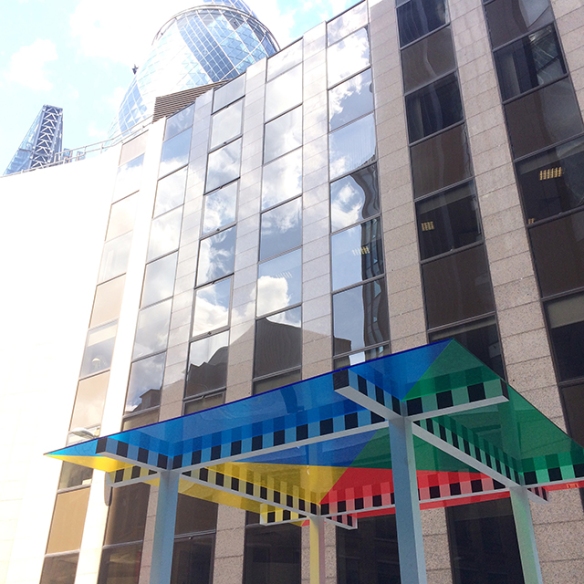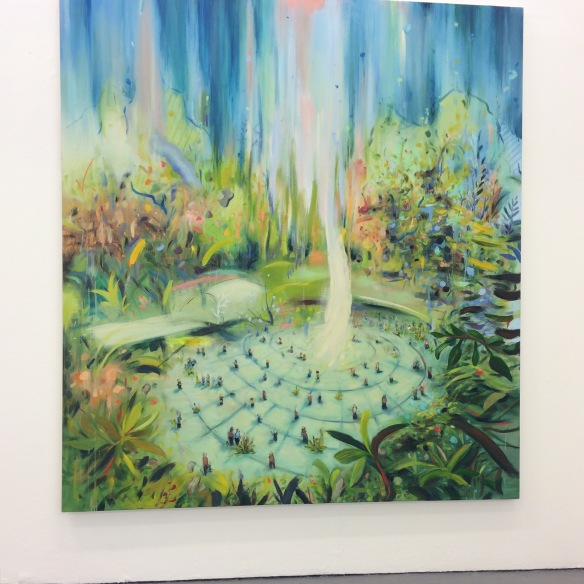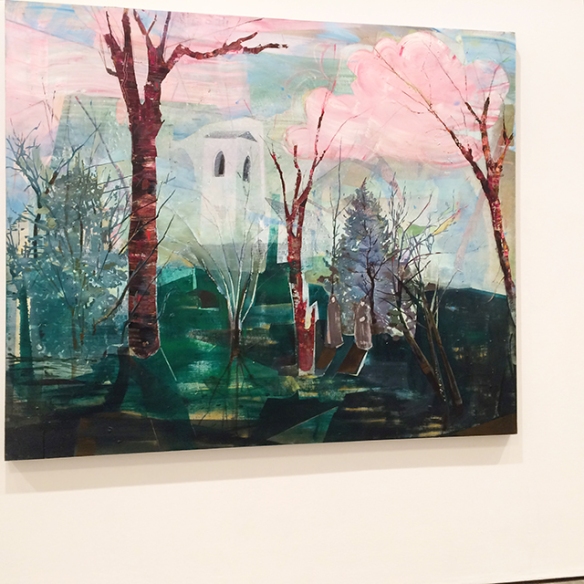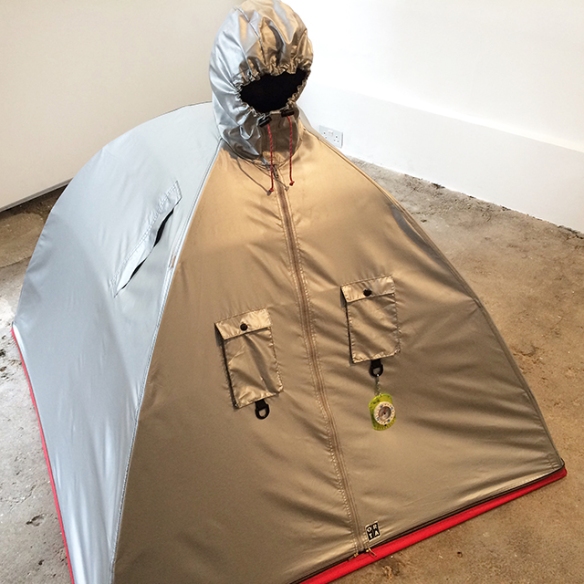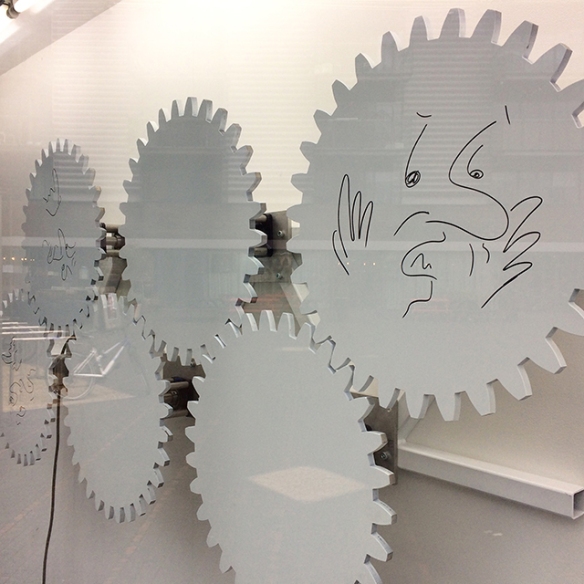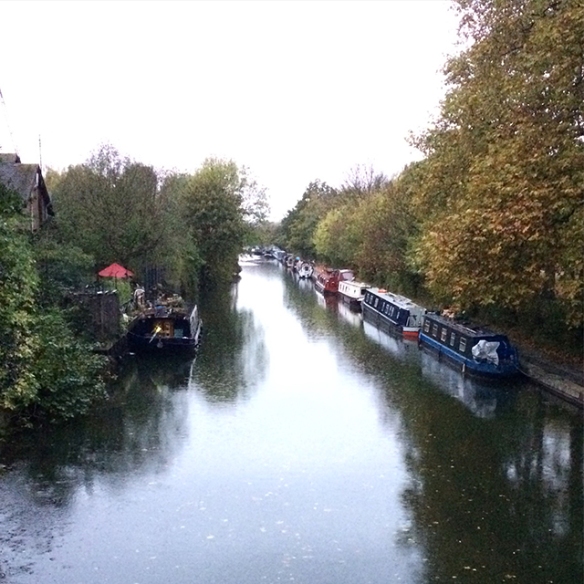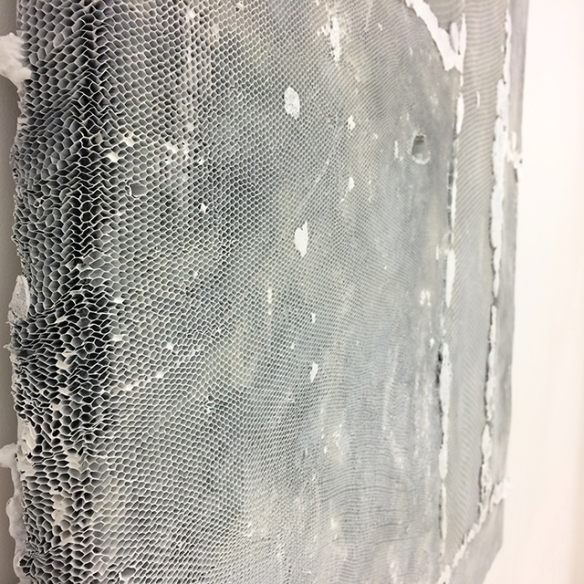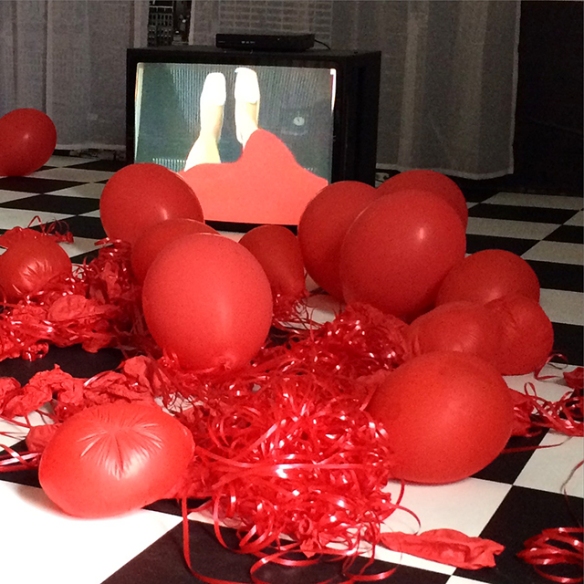The Regent’s Canal is the main route for this week’s gallery run. It offers a passage across the north of London hugging the upper curve of Regent’s Park before continuing east and then heading down to the Thames near Canary Wharf. A canal is more than just thoroughfare though, it may in some respects be considered a friend. Apart from providing great company with its spectacle of barges and locks, its own objectives of seeking out warehouses, docks and old gasworks, seem to match up to those of any intrepid gallery visitor whose primary targets lie in those very buildings that the canal was originally built to serve. Occasionally one sees a bridge overhead, though with little evidence of the main road running over its hump, and rather like a departure through a tube station, the steps up to the bridge offer access to a terrestrial world that has lain out of sight during the journey itself.
Whilst leaving the canal is easy enough, trying to arrive at it through a pleasant route can cause some difficulties. From South London, access is best gained through the green corridor of St Jame’s Park, Green Park and Hyde Park. But for perfectionists, there is no avoiding the dusty streets off Edgware Road that puncture any illusion of a green and blue thoroughfare. There is some small compromise though as an extension of the canal offers itself to those coming up from Hyde Park. Here they can enter a region called the Paddington Basin. To the first time user, this assembly of watery and grassy sections comes as a surprise as the pieces start seeking connections to each other, tessellating themselves to form a new psychic map of the city. On this map sit the galleries themselves. Lisson Gallery is reached from one of the earlier bridges, whilst further east, lies the Gagosian gallery, before Wharf Road then provides access to a further hub. Here a tributary of the canal has extended down the backs of some warehouses to Victoria Miro Gallery and Parasol space. The road runs down the front, initially enforcing a separation from the day’s travelling companion but quickly providing a reunion. This comes about because the two galleries themselves have teamed up to create a landscaped region at their rear which incorporates the canal tributary itself into a surprising sculpture patio with watery backdrop.
To reach Stuart Shave Modern Art, the canal must be left behind completely as one crosses the busy road running down from Islington. Though only five minutes away, the waterway seems to be no more than a distant memory since cars and trucks now dominate the urban space. This introduces a separate class of galleries, those that are surrounded by roads, but lie only a stone’s throw away from the core loop comprising the three parks and the canal. To this class, in fact, can be added all the Mayfair galleries lying just across Piccadilly from Green Park and the green and blue thread of which it is part. Stuart Shave’s gallery is set to the side of an attractive square with attendant church that plays host to the London Philharmonic Orchestra most lunchtimes. Enjoying not just the kudos of this location and companion building, the gallery has also gained a new-found reputation through its own merit, being the current holder of the Best Exhibitor prize from this year’s Frieze show.
Inside, Phillip Lai has displayed works made from plastic and rubber objects. A blue washing up bowl is screwed vertically to the wall and at the bottom is some dried rice whose simple crescent shape looks like a smile drawn by the deft hand of a cartoonist animating it into a face, at least to those open to such a possibility. Then on another wall the artist has displayed a large green 8×4 wooden board. The only suggestion of its origins are some light bulbs that punctuate its surface with white plastic bulb holders screwed to the board, some sitting on the surface and others appearing to protrude from underneath. The time line of this assembly is unclear and it is also unclear if it is a found object from a fair ground or has been made deliberately. The few drips of green paint that run across the holders indicate that the bulbs were an early addition to the piece predating the paint but offer no further solution to this question. With these thoughts in mind, I rejoin the canal as it moves onwards to Limehouse, and share some last moments of revery as it silently approaches the Thames.
On display too, are images below from this year’s Goldsmiths MFA fine art degree show.

Spitfire Works on Penfold Street close to the Regents Canal. This Art Deco classic was home to a manufacturer of tyres for WW2 aircraft including the eponymous Spitfire. Palmer Tyre Company.

Gallery Runner entered into the spirit of this Stuart Cumberland piece at The Approach Gallery. Excellent show.

Looking out from Ben Pimlott Building of Goldsmiths College designed by Alsop and Partners. Will Alsop had previously produced a set of squiggle drawings inspired by the same location of New Cross.

Used the Regents Canal to access all the galleries today, first Lisson Gallery, then Stuart Shave Modern Art and finally The Approach Gallery before exiting at Limehouse Basin and heading back to Peckham.

Dan Graham’s pavilion at Lisson Gallery with some classic video pieces including CCTV of a fox locked in the national gallery (London) at night.

Great landscape piece by Roel van Putten at Goldsmiths MFA Fine Art.
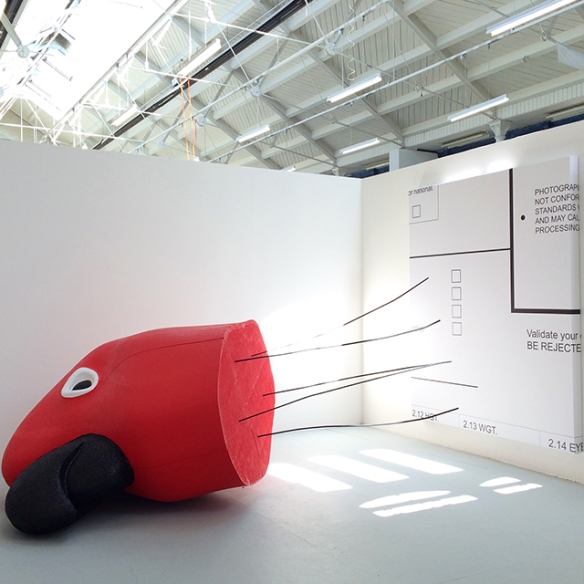
This piece at Goldsmiths MFA Fine Art by Gui Ponde really is very good. Some strange detached head juxtaposed with government identification papers as if that might make the taxonomic process any easier!

Gallery Runner spotted this mini gallery in the goldsmiths MA Fine Art degree show. As a past student I am familiar with the conversion of the swimming pool into art studios whilst the old poolside changing rooms are now used for storage. It appears one of these has become a shrine to BANK of MOT International. Artists of this collective included Simon Bedwell, John Russell and Milly Thompson. Here can be seen altered (improved) gallery press releases dating back to their seminal late 90’s period.

Phillip Lai at Stuart Shave Modern Art using his customary rubber materials and juxtaposed bright colours.
 Abigail Fallis on The Line sculpture trail by the River Lea.
Abigail Fallis on The Line sculpture trail by the River Lea. Some DIY sculpture on the Regents Canal.
Some DIY sculpture on the Regents Canal. Raphaela Simon at Michael Werner with simple-looking but complex paintings. Also, interesting sewn sculptures of figures.
Raphaela Simon at Michael Werner with simple-looking but complex paintings. Also, interesting sewn sculptures of figures. Antony Gormley at Thaddaeus Ropac with a figure embedded amongst the interlocking rods.
Antony Gormley at Thaddaeus Ropac with a figure embedded amongst the interlocking rods. Joseph Beuys at Thaddaeus Ropac.
Joseph Beuys at Thaddaeus Ropac. Valie Export at Thaddaeus Ropac in a show featuring her 1980 Venice Biennale works.
Valie Export at Thaddaeus Ropac in a show featuring her 1980 Venice Biennale works. Marcin Maciejowski with acerbic commentary on art appreciation, delivered in nicely painted images.
Marcin Maciejowski with acerbic commentary on art appreciation, delivered in nicely painted images.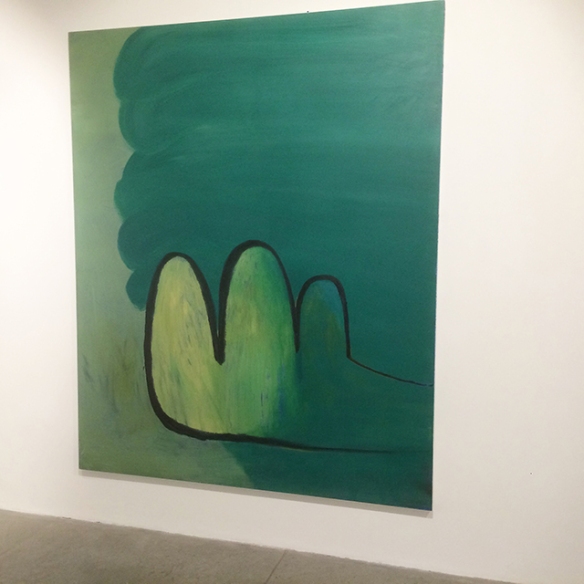 Gabriela Giroletti at Bloomberg New Contemporaries showing at South London Gallery.
Gabriela Giroletti at Bloomberg New Contemporaries showing at South London Gallery. Yulia Losilzon at Bloomberg New Contemporaries in South London Gallery.
Yulia Losilzon at Bloomberg New Contemporaries in South London Gallery.
 Marylyn Molisso at Tension Fine Art.
Marylyn Molisso at Tension Fine Art. Street art meets canal boat on Islington stretch of Regent’s Canal.
Street art meets canal boat on Islington stretch of Regent’s Canal. On the water near Kings Cross, propane tanks aglow.
On the water near Kings Cross, propane tanks aglow. Laure Prouvost at Lisson Gallery with text on a corner.
Laure Prouvost at Lisson Gallery with text on a corner. Faith Ringgold at Serpentine Gallery with poignant painted canvases integrated into stitched, quilted, borders.
Faith Ringgold at Serpentine Gallery with poignant painted canvases integrated into stitched, quilted, borders. Faith Ringgold at Serpentine Gallery with paintings showing powerful narratives. A burning ship and its trade are the very symbols of injustice.
Faith Ringgold at Serpentine Gallery with paintings showing powerful narratives. A burning ship and its trade are the very symbols of injustice. Faith Ringgold holds court and all of our attention at Serpentine Gallery today as she discusses her work there.
Faith Ringgold holds court and all of our attention at Serpentine Gallery today as she discusses her work there. Shelagh Cluett at Greengrassi with delicate, sea-creature-like sculptures.
Shelagh Cluett at Greengrassi with delicate, sea-creature-like sculptures. David Lieske at Corvi Mora.
David Lieske at Corvi Mora.






